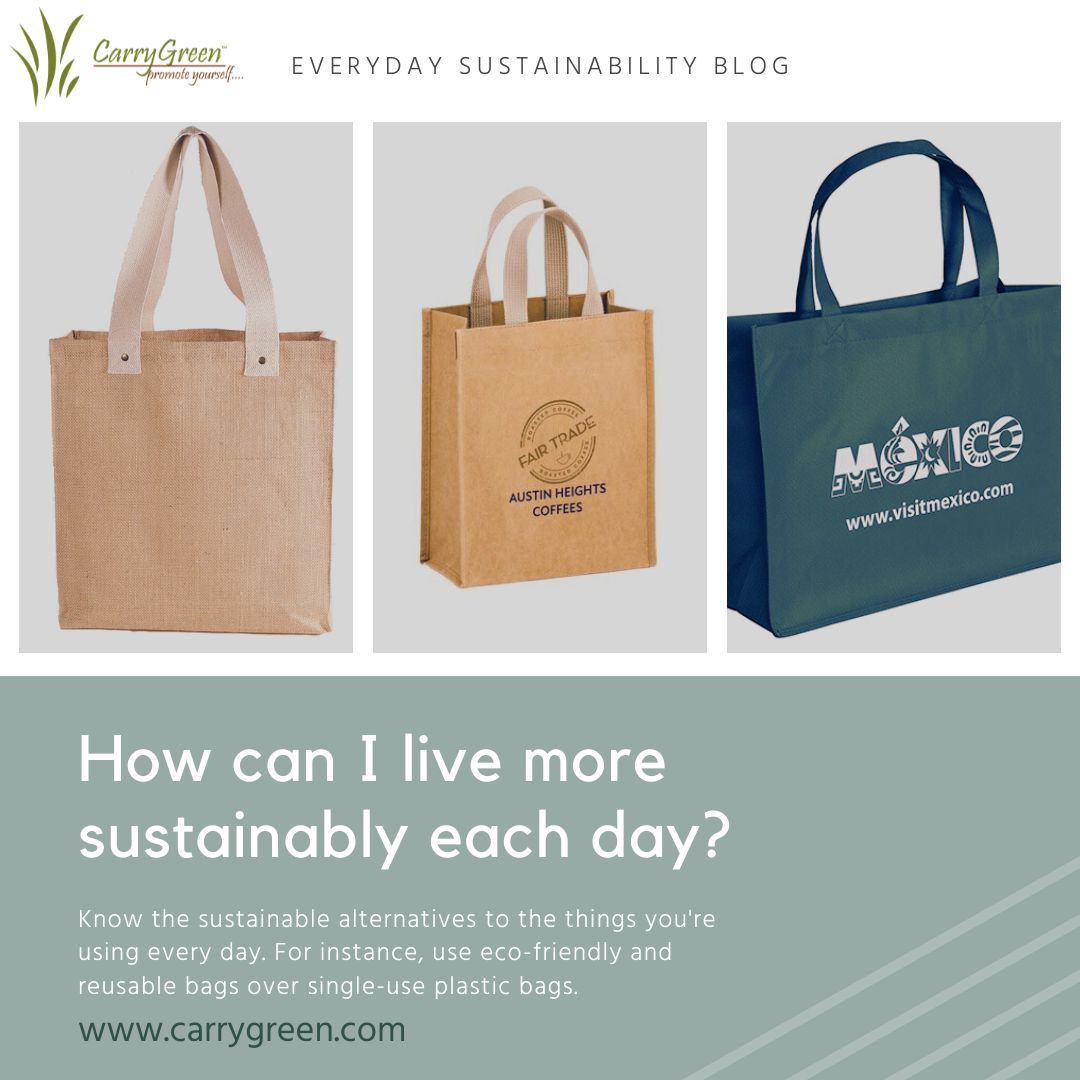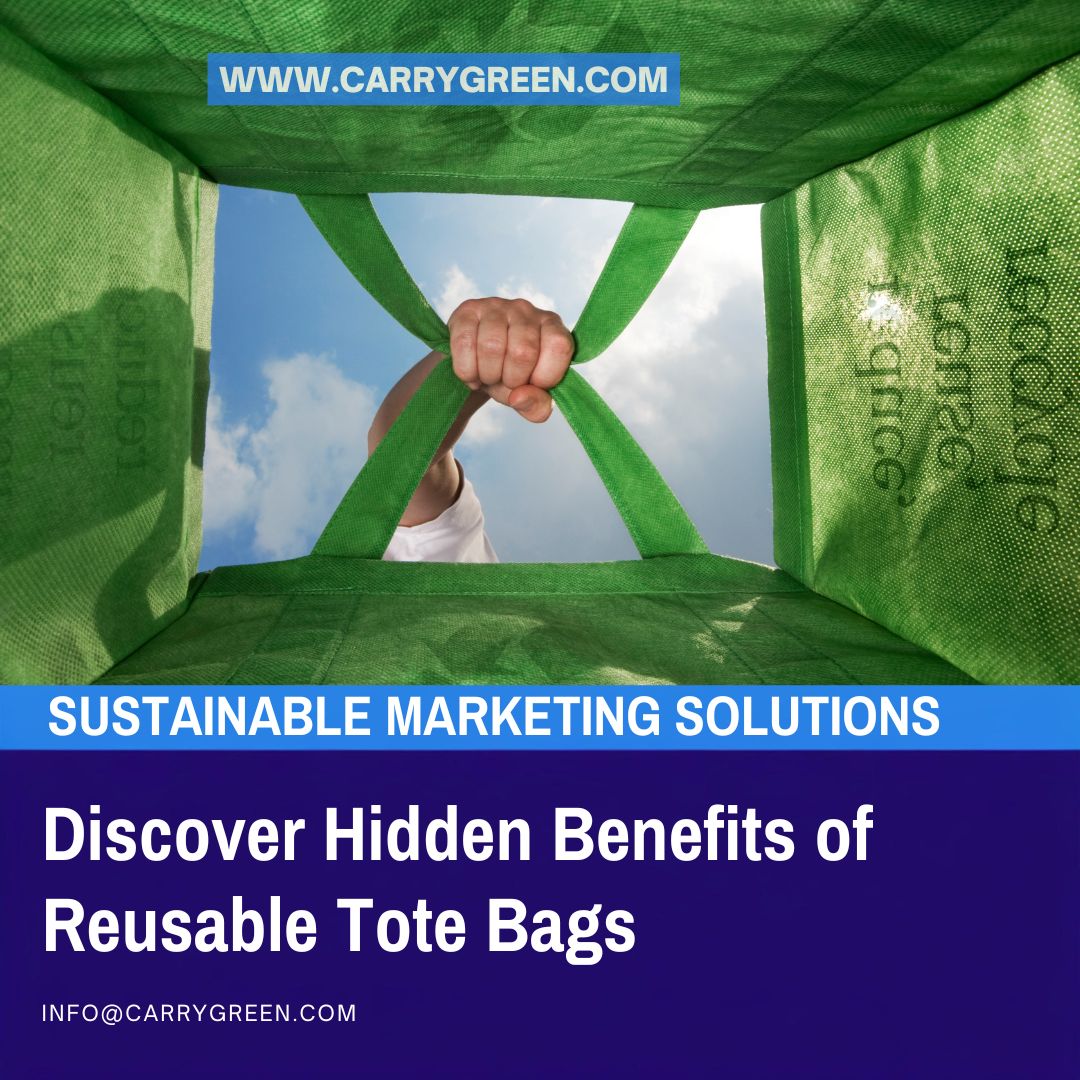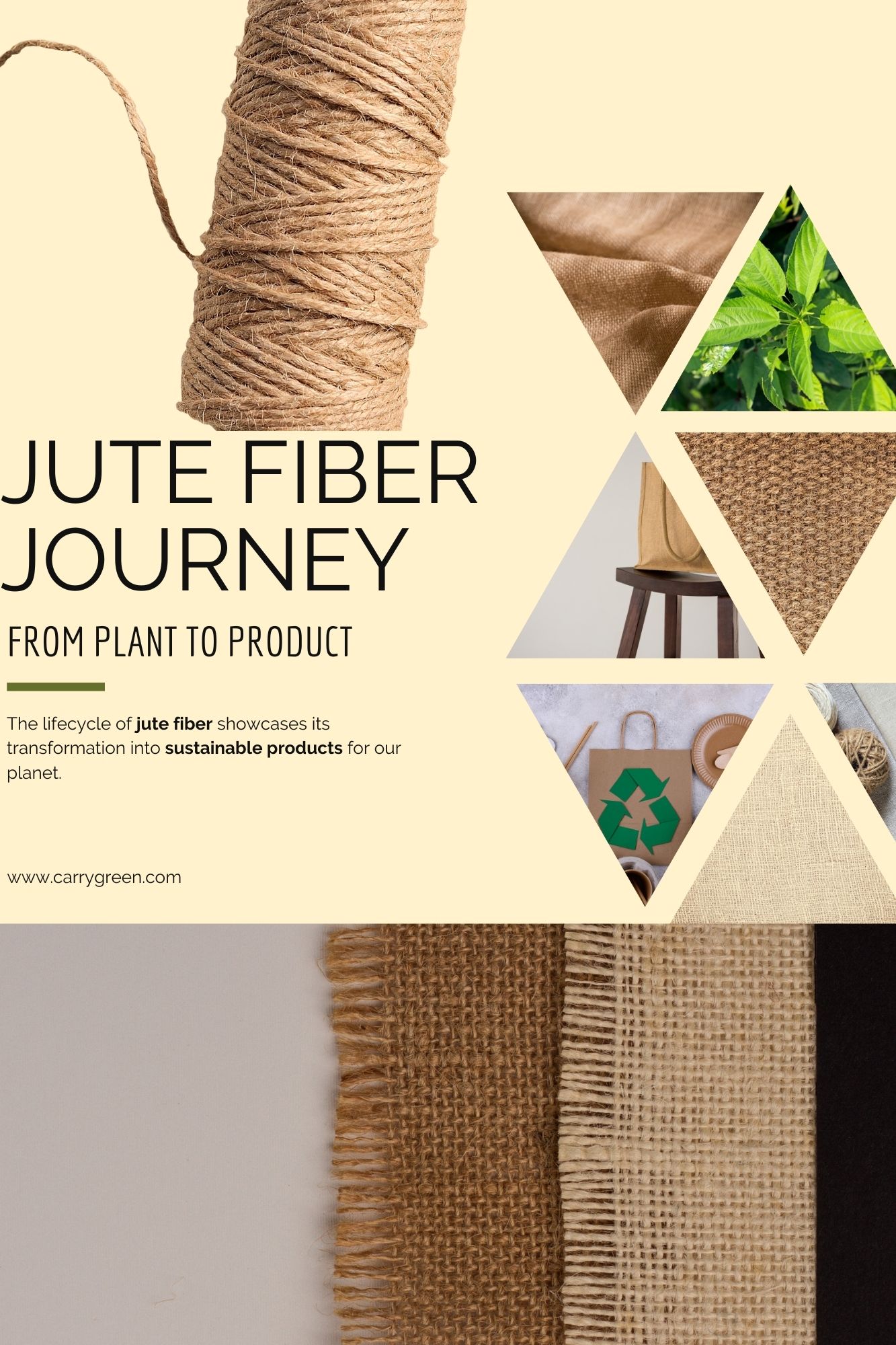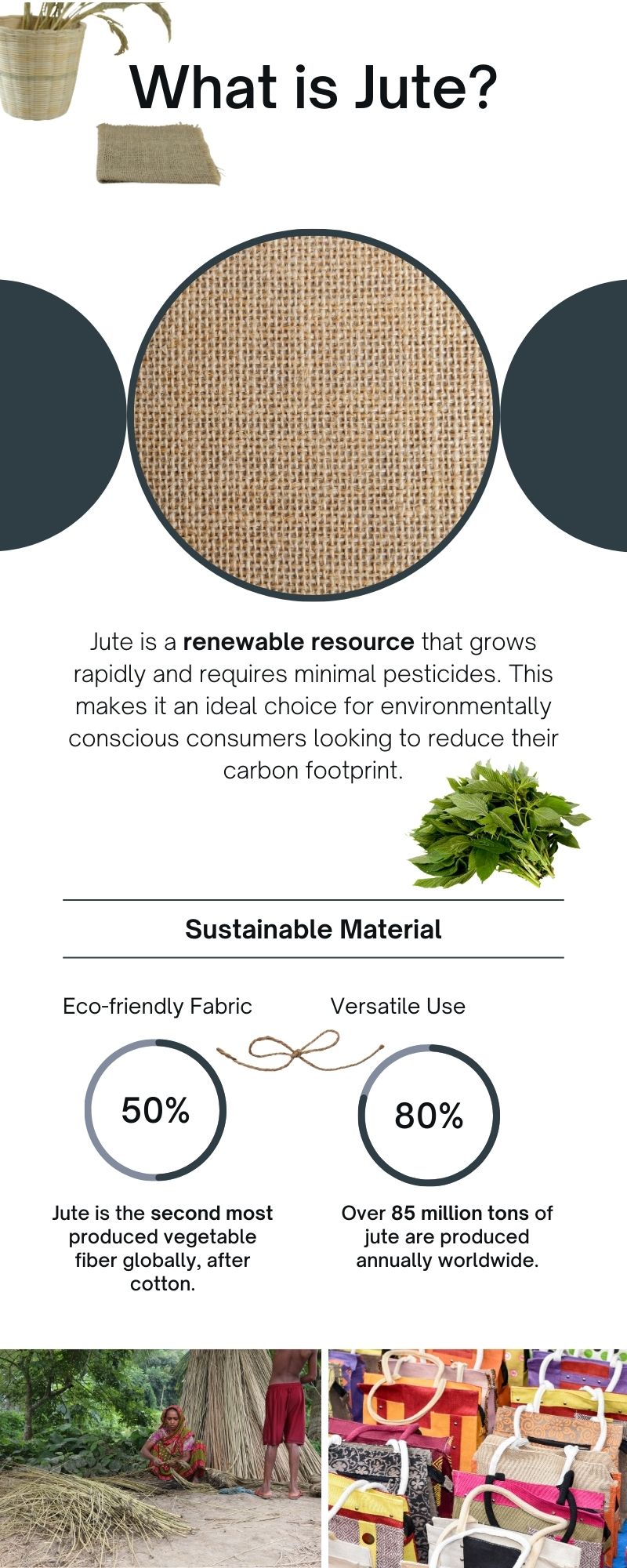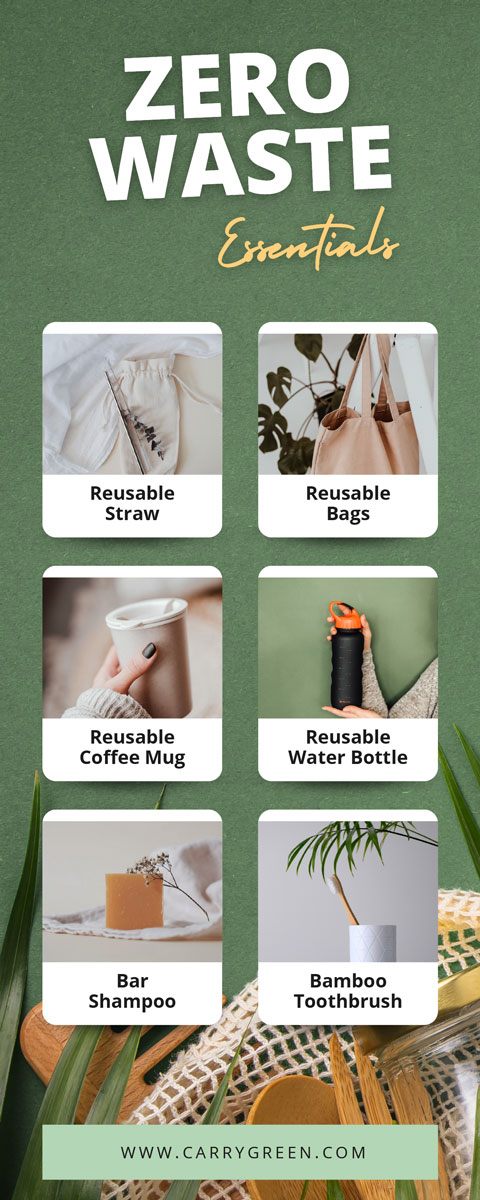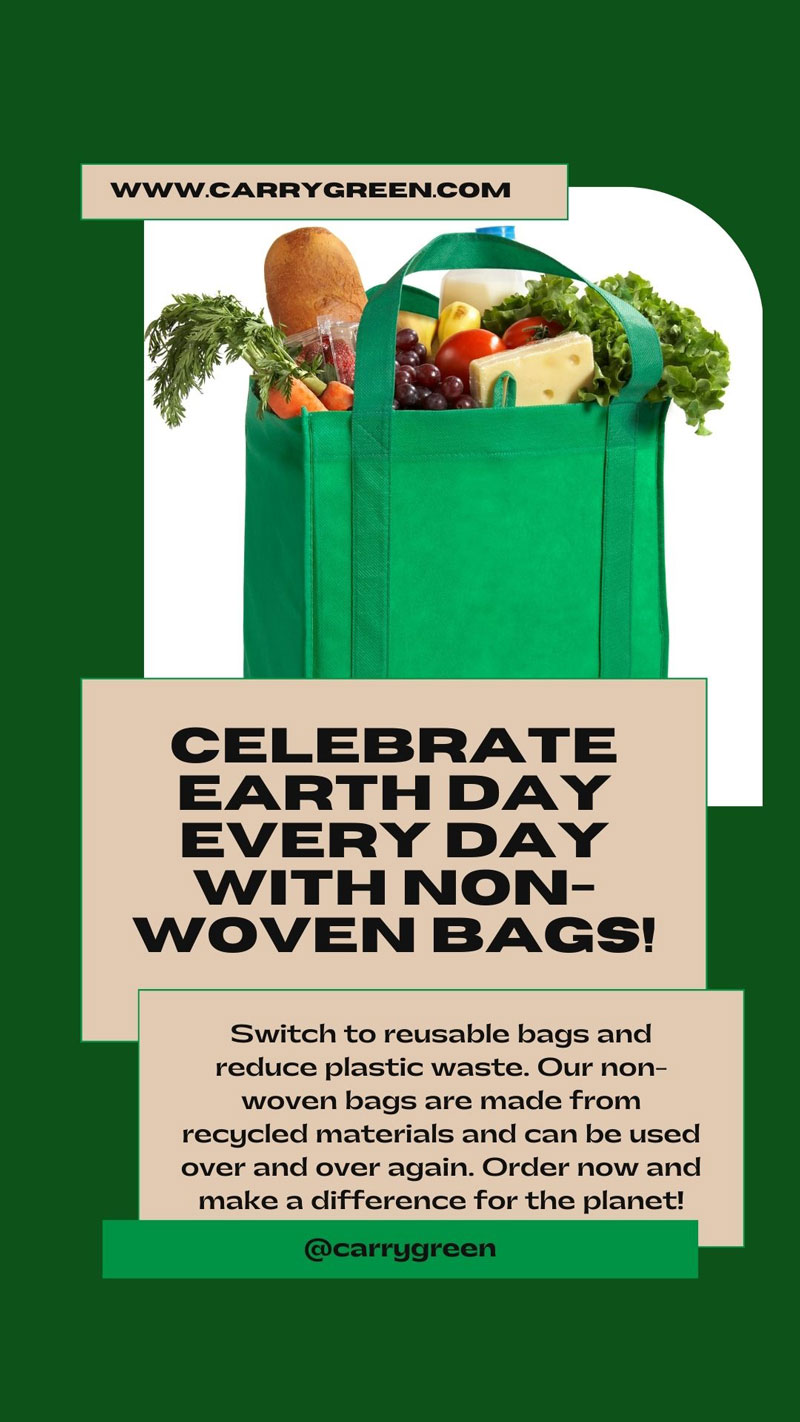#reusablebags
-
Posted: September 15, 2025Categories: Reusable BagsRead more »
Types of Material for Reusable Grocery Bags
In the move towards eco-friendly living, reusable grocery bags have become a must-have for shopping, traveling, and daily use. At CarryGreen, we offer a wide variety of sustainable bags made from different materials, each with its own benefits. Here are the most popular options:
1. Jute Bags
Jute grocery bags are strong, stylish, and 100% biodegradable. Known as the “golden fiber,” jute is durable and naturally eco-friendly. These bags are perfect for heavy groceries and give a rustic, natural look.
2. Cotton Tote Bags
Cotton tot
-
Posted: April 22, 2025Categories: Products, Jute, Cotton Bags, Non-Woven Bags, Reusable Bags, Personalized Bags, Promotional ItemsRead more »
Celebrate Earth Day with Reusable & Recyclable Bags from CarryGreen
Every year on April 22, we celebrate Earth Day—a special day to remind us how important it is to take care of our planet. It’s a time to think about how we live and what small changes we can make to help protect the Earth for future generations.
Why Earth Day Matters
Our planet provides everything we need—clean air, water, and resources to live comfortably. But pollution, waste, and deforestation are harming the environment. Earth Day encourages everyone to make simple changes to reduce their impact and help restore nature.Easy Ways to Help
Choose Reusable Bags & Totes – Plastic bags end up in landfills and oceans, causing harm to wildlife. Instead, switch to reusable bags and recyclable totes to cut down on plastic waste.Go for Eco-Friendly Products – From
-
Posted: March 06, 2025Read more »
One of the most cost-effective and eco-friendly ways to promote your brand is through non-woven bags. These reusable tote bags not only serve as practical everyday items but also act as walking advertisements for your business.Here are the hidden benefits of incorporating non-woven bags into your branding strategy.
1. Eco-Friendly Branding Non-woven bags are reusable and often made from recyclable materials, making them an environmentally friendly alternative to single-use plastic bags. By offering eco-friendly bags, you show that your brand cares about the environment, making it more appealing to modern shoppers.
2. High Customization Potential Whether it’s your logo, tagline, or a vibrant design, you can customize Jute or cotton bags to reflect your brand’s personality.
3. Cost-Efficiency Non-woven bags are a budget-friendly option for businesses.Custom printed bags provide an affordable marketing solution with long-term benefits. Instead of paying for repeated ads
-
Posted: February 12, 2025Categories: JuteRead more »
The Lifecycle of Jute Fiber: From Seed to Sustainable Product
Jute is one of the most versatile and sustainable natural fibers, making it a popular choice for eco-friendly products. Let's explore the fascinating journey of jute fiber from its cultivation to the final product. Known as the "golden fiber," jute is widely used for making eco-friendly bags, home decor, and industrial textiles.
1. Cultivation and Harvesting
Jute plants thrive in the warm and humid climates of countries like India and Bangladesh. The plants are sown during the monsoon season and require ample water for growth. After 4 to 6 months, the plants reach maturity, standing tall at about 10-12 feet.Harvesting begins by cutting the jute stalks at the base. These stalks are then bundled together and submerged in water for retting, a process that helps to separate the fibers from the woody
-
Posted: February 07, 2025Categories: JuteRead more »
What is Jute and Its Uses?
Jute, often referred to as the "golden fiber," is a long, soft, and shiny vegetable fiber that can be spun into coarse, strong threads. It's primarily produced from the Corchorus plant, which thrives in tropical and subtropical regions, with India and Bangladesh being the top producers. Jute is one of the most affordable natural fibers and is second only to cotton in terms of production volume and variety of uses. Jute is biodegradable, recyclable, and sustainable, making it a popular choice for eco-conscious consumers and businesses.
Its fibers are used to create a variety of products, from everyday items like bags, ropes, and mats to more industrial uses like canvas, carpet backing, and geotextiles. Jute's biodegradability and eco-friendly nature make it an excellent alternative to synthetic materials, particularly in packaging and agricultural sectors.
In recent years, jute has also made its way into the fashion
-
Posted: September 23, 2024Read more »
Green Through and Through How to Spot Truly Eco-Friendly Products
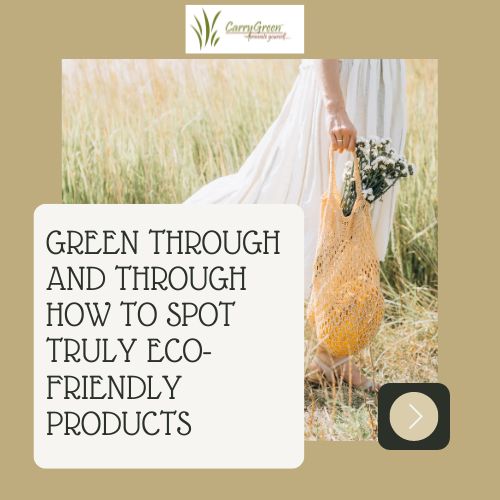
In today's environmentally conscious market, the demand for eco-friendly products is higher than ever. However, with the rise of greenwashing – where companies claim their products are more environmentally friendly than they actually are – identifying genuinely sustainable goods can be challenging. Here are key tips and criteria consumers can use to evaluate the authenticity and sustainability of eco-friendly products.
Understanding Eco-Friendly Certifications
Eco-friendly certifications are a reliable indicator of a product's environmental impact. CarryGreen, for
-
Posted: May 21, 2024Read more »
Embracing Sustainability Eco-Friendly Alternatives for Everyday Use
In the quest for a greener planet, small changes in our daily routines can lead to significant environmental impacts. Switching to eco-friendly alternatives not only reduces our carbon footprint but also promotes a sustainable lifestyle. Here are some sustainable swaps for commonly used products that are easy to incorporate into your everyday life.
Reusable Shopping Bags
Single-use plastic bags are a significant pollutant, harming marine life and contributing to landfill waste. Reusable shopping bags, made from materials like cotton, jute, or recycled plastics, offer a durable and eco-friendly alternative. CarryGreen and similar platforms offer a wide variety of stylish and sturdy options that cater to all shopping needs.
Stainless Steel Water Bottles
Billions of plastic water bottles
-
Posted: April 22, 2024Tags: sustainablechoices, #zerowasteliving, #sustainableliving, #reusablerevolution, #reusablefashion, #reusablebags, #reducereuserecycle, #reduceplasticwaste, #planetfriendly, #nonwovenbags, #greenliving, #gogreen, #everydayisearthday, #environmentallyfriendly, #ecofriendlybags, #ecoconscious, #ecobags, #earthdayeveryday, #consciousconsumer, #carrygreenRead more »
As Earth Day approaches this April, it's a timely reminder of our collective responsibility towards planet Earth. While Earth Day is a global event dedicated to environmental protection, why limit our efforts to just one day? Every day presents an opportunity to make eco-friendly choices, and one simple yet impactful way to do this is by choosing non-woven bags over single-use plastics.
The Environmental Benefits of Non-Woven Bags
Non-woven bags are made from polypropylene, a type of plastic that's engineered to look and feel like fabric without being woven, making them strong, durable, and reusable. Unlike single-use plastic bags, which can take hundreds of years to decompose, non-woven bags can be recycled, reducing the amount of waste that ends up in landfills. Their durability also means they can be used repeatedly, decreasing the need for disposable bags and thus reducing your carbon footprint.
Custom

